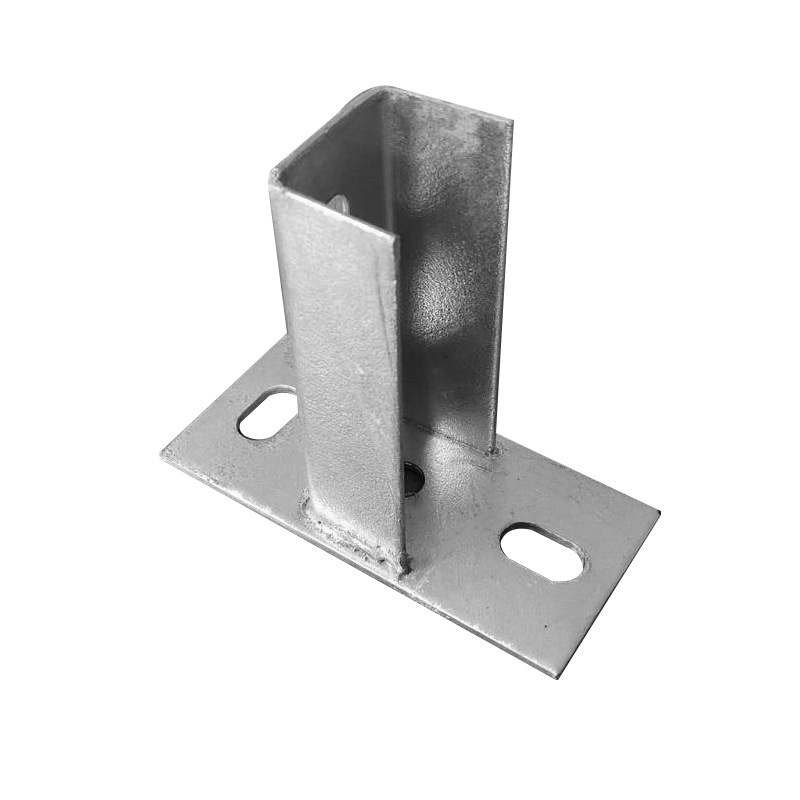

Understanding ASTM A490 Standards for High Strength Structural Bolts and Their Applications
Des . 14, 2024 17:45 Back to list
Understanding ASTM A490 Standards for High Strength Structural Bolts and Their Applications
Understanding ASTM A490 Specifications and Applications
ASTM A490 is a crucial standard in the realm of materials engineering, especially in the construction and manufacturing sectors. It pertains to the specifications for high-strength structural bolts made from heat-treated steel, particularly alloy steel, for use in structural applications. Understanding ASTM A490 is essential for engineers, contractors, and manufacturers to ensure the integrity and safety of their structures.
Overview of ASTM A490
ASTM A490 was first established by ASTM International, a globally recognized leader in the development and delivery of voluntary consensus standards for materials, products, systems, and services. The standard specifically covers the requirements for high-strength bolts, nuts, and washers used in bolted steel connections. These fasteners are designed to resist both tension and shear forces, making them vital for the structural integrity of numerous applications, including bridges, buildings, and other load-bearing structures.
Chemical Composition and Mechanical Properties
One of the distinguishing features of ASTM A490 bolts is their chemical composition. They are made from heat-treated alloy steel, allowing for improved strength and performance under extreme conditions. The mechanical properties specified in ASTM A490 include a minimum tensile strength of 150 ksi (kilopounds per square inch) and a yield strength that must exceed 130 ksi. This high strength is essential for applications that face heavy loads and require fasteners that can withstand prolonged stress.
Furthermore, the standard outlines the allowable limits for various elements in the steel, including carbon, manganese, phosphorus, sulfur, silicon, and nickel, among others. These elements play a crucial role in determining the performance characteristics of the fasteners, such as ductility, toughness, and corrosion resistance.
Bolt Configuration and Installation
astm a 490

ASTM A490 covers several configurations of bolts including those with various head styles and thread types. The most common applications use hexagon head bolts, which are universally recognized for their ease of installation and removal. Additionally, the bolts are typically used in conjunction with compatible nuts and washers that also meet specific ASTM standards.
Proper installation of ASTM A490 bolts is critical to ensuring the strength and safety of the structures they support. The standard provides guidelines for torque values during installation, which are crucial for developing the necessary frictional resistance between the bolt, nut, and assembled materials. Over-torquing can lead to a compromised bolt, while under-torquing may result in insufficient clamping force.
Applications of ASTM A490 Bolts
The robustness of ASTM A490 bolts makes them suitable for a wide range of applications in various industries. These include heavy construction, where they are used in steel girders, bridges, and high-rise buildings. The aerospace industry also benefits from the use of A490 bolts, where strength-to-weight ratios are critical. Furthermore, they are often employed in utility structures, including power plants and telecommunications towers, where reliability is paramount.
The adoption of ASTM A490 in public infrastructure is particularly significant; structures are subject to rigorous testing and standards to ensure safety for public use. In recent years, there has been an increased focus on sustainability and longevity in construction practices. The use of high-strength bolts like those specified in ASTM A490 reduces the amount of material needed while increasing the overall resilience of structures.
Conclusion
In conclusion, ASTM A490 represents a critical standard within the field of construction and manufacturing, facilitating the development of safe and reliable structures. Understanding its specifications, including chemical composition, mechanical properties, and proper installation techniques, is essential for professionals in the industry. As construction practices evolve and become more demanding, the relevance of ASTM A490 and its applications will continue to grow, ensuring that structures can withstand the test of time and environmental challenges. For engineers and contractors alike, adherence to ASTM A490 standards is vital for the protection and well-being of the infrastructures we depend on every day.
Latest news
-
High-Strength Hexagon Nuts: Secure & Reliable Fastening Solutions
NewsAug.27,2025
-
Full Thread Studs: Max Strength & Secure Fastening Solutions
NewsAug.26,2025
-
Secure Threaded Fasteners: Steel, Titanium, Wall, Wood Solutions
NewsAug.21,2025
-
Durable Brass Fasteners: Quality Solutions for Every Project
NewsAug.19,2025
-
High-Strength Hot Dip Galvanized Bolts - Hebei Longze Metal Products Manufacturing Co., Ltd.|Corrosion Resistance, Customizable Sizes
NewsAug.18,2025
-
Hot Dip Galvanized Bolts - LongZe | Corrosion Resistance, High Strength
NewsAug.18,2025

